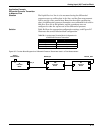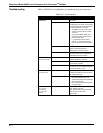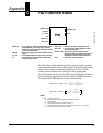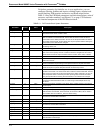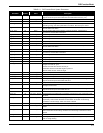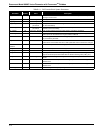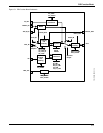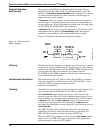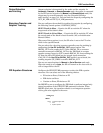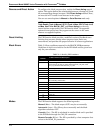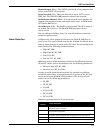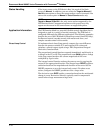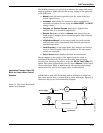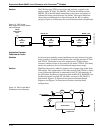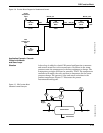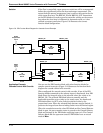
C-7
PID Function Block
Output Selection
and Limiting
Output selection is determined by the mode and the setpoint. In
Automatic, Cascade, or RemoteCascade mode, the output is computed
by the PID control equation. In Manual and RemoteOutput mode, the
output may be entered manually (see also “Setpoint Selection
and Limiting” on page C-6). You can limit the output by configuring the
OUT_HI_LIM and OUT_LO_LIM parameters.
Bumpless Transfer and
Setpoint Tracking
You can configure the method for tracking the setpoint by configuring
the following control options (CONTROL_OPTS):
SP-PV Track in Man — Permits the SP to track the PV when the
target mode of the block is Man.
SP-PV Track in LO or IMan — Permits the SP to track the PV when
the actual mode of the block is Local Override (LO) or Initialization
Manual (IMan).
When one of these options is set, the SP value is set to the PV value
while in the specified mode.
You can select the value that a master controller uses for tracking by
configuring the Use PV for BKCAL_OUT control option. The
BKCAL_OUT value tracks the PV value. BKCAL_IN on a master
controller connected to BKCAL_OUT on the PID block in an open
cascade strategy forces its OUT to match BKCAL_IN, thus tracking the
PV from the slave PID block into its cascade input connection
(CAS_IN). If the Use PV for BKCAL_OUT option is not selected, the
working setpoint (SP_WRK) is used for BKCAL_OUT.
You can set control options in Manual or OutofService mode only.
When the mode is set to Auto, the SP will remain at the last value (it
will no longer follow the PV.
PID Equation Structures Configure the STRUCTURE parameter to select the PID equation
structure. You can select one of the following choices:
• PI Action on Error, D Action on PV
• PID Action on Error
• I Action on Error, PD Action on PV
Set RESET to zero to configure the PID block to perform integral only
control regardless of the STRUCTURE parameter selection. When
RESET equals zero, the equation reduces to an integrator equation
with a gain value applied to the error:
GAIN e s()×
s
--------------------------------
Where
GAIN: proportional gain value
e: error
s: laplace operator



